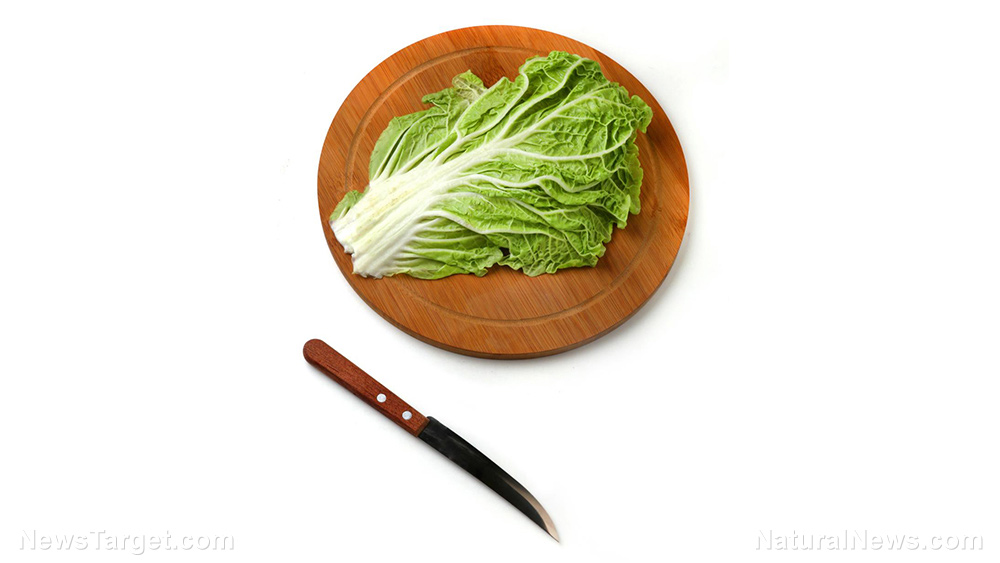
Advertisement
Napa cabbage is a large-headed cabbage with firmly packed, pale green leaves. You’ll usually find it next to bok choy in supermarkets. In the West, napa cabbage is the vegetable often associated with the name “Chinese cabbage” even though there are actually various types of Chinese cabbages, such as bok choy.
Botanically, napa cabbage belongs to the same family of vegetables as broccoli, cauliflower and Brussels sprout. This group of vegetables has been associated with various health benefits, with the most notable one being cancer protection.
Napa cabbage is an incredibly versatile ingredient to cook with. It can be eaten raw, sauteed or added to a stew. Part of what makes this cabbage such a versatile vegetable is the fact that it absorbs the flavors of the foods it is cooked with. This is why you’ll often find napa cabbage in Chinese-style soups and hot pots.
Napa cabbage itself has a mild and slightly sweet taste. It’s also not as pungent as other kinds of cabbages.
When buying napa cabbage, look for ones with firm green leaves that aren’t wilted, scarred or eaten by bugs. It should also feel heavy. It’s best to use napa cabbage in the first two or three days so that its leaves are still crisp. But napa cabbage can stay fresh for longer if kept in a plastic bag and stored in the refrigerator.
How to prepare and cook napa cabbage
Napa cabbage is fairly easy to prepare and cook. Here’s a three-step method for cleaning and cutting it:
- Cut off the hard bottom of the cabbage.
- Halve it lengthwise or peel off the leaves individually.
- Slice the halves or the leaves into shreds as thick or as thin as you need them to be. Rinse and drain.
Recipe for stir-fried napa cabbage with hot and sour sauce
Stir-fry napa cabbage leaves and serve them with a hot and sour sauce for an easy yet tantalizing side dish.
Ingredients for 2 servings:
- 4 garlic cloves, minced
- 2–4 dried chili peppers, thinly sliced
- 1 stalk scallion, finely chopped
- 1 pound napa cabbage head
- 1 1/2 tablespoons black rice vinegar
- 1 Tablespoon light soy sauce
- 1 Tablespoon tapioca starch or cornstarch
- 1 Tablespoon olive oil
- 1 Tablespoon water
- Pinch of sugar
- Pinch of salt
Preparation:
- Peel off the leaves of the cabbage. Lay the leaves flat on the chopping board and slice them into bite-sized pieces.
- In a small bowl, mix black rice vinegar, light soy sauce, tapioca starch, salt, sugar and water. Set aside.
- Heat a skillet over high heat. Add the olive oil, then add the garlic and dried chili peppers. Fry until fragrant.
- Add the sliced cabbage leaves. Stir fry just until they start to wilt.
- Pour the hot and sour sauce over the leaves. Add the scallions and mix well.
- Continue cooking until the sauce thickens. Remove from the heat and serve immediately.
Recipe for lion’s head meatballs with napa cabbage
Lion’s head meatballs is a classic Chinese dish consisting of giant pork meatballs, napa cabbage and a delicious broth.
Ingredients for 4 servings:
- 1–2 medium green onions, minced
- 1 large egg, beaten
- 1 pound napa cabbage
- 1 pound lean ground pork
- 1 1/2 cups low-sodium chicken broth
- 3 Tablespoons light soy sauce, divided
- 3 Tablespoons tapioca starch or cornstarch
- 2 Tablespoons olive oil
- 2 1/2 teaspoons dry sherry
- 1 teaspoon minced ginger
- 1 teaspoon sugar
- 3/4 teaspoon salt
- 1/2 teaspoon sesame oil
- Ground black pepper, to taste
Preparation:
- Cut the napa cabbage into 3-inch strips.
- In a bowl, combine the ground pork, green onion, ginger, salt, sugar, dry sherry, 1 tablespoon soy sauce, sesame oil, egg and black pepper to taste. Add tapioca starch to thicken the mixture.
- Shape the mixture into 4 large meatballs. Flatten them slightly so that they’re not completely round.
- Heat the olive oil in a skillet. Add the meatballs and cook for 5 minutes on each side.
- Add the chicken broth and the remaining soy sauce to a pot. Bring to a boil.
- Add the cooked meatballs and reduce the heat. Simmer, covered, for 10 minutes.
- Add the napa cabbage and continue simmering for 15 minutes. Serve the meatballs on a plate with a bowl of broth on the side.
Napa cabbage is a versatile vegetable you can easily add to your daily routine. Try it for yourself by making any of the two napa cabbage dishes shared above.
Sources:
Advertisements







